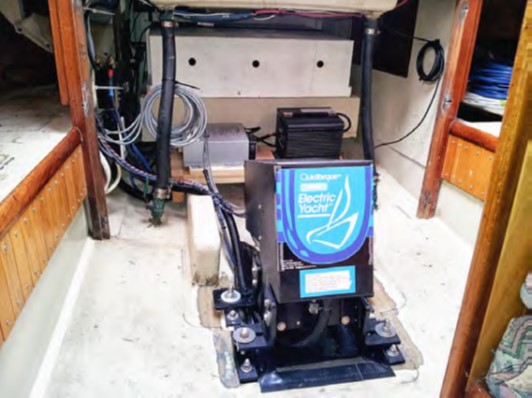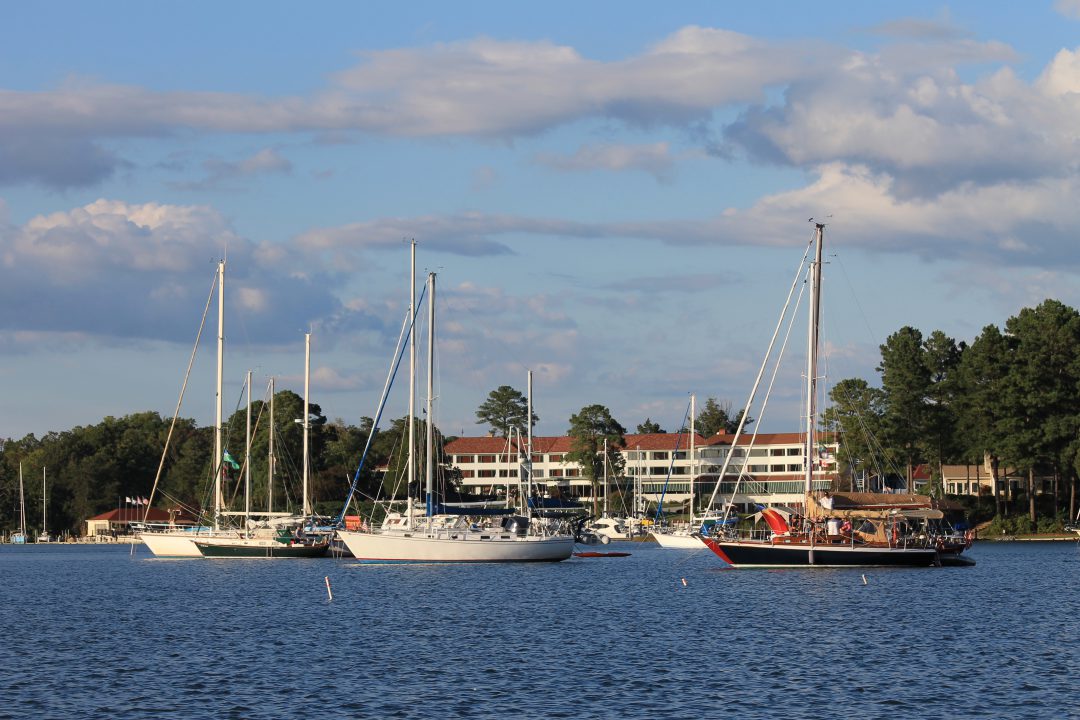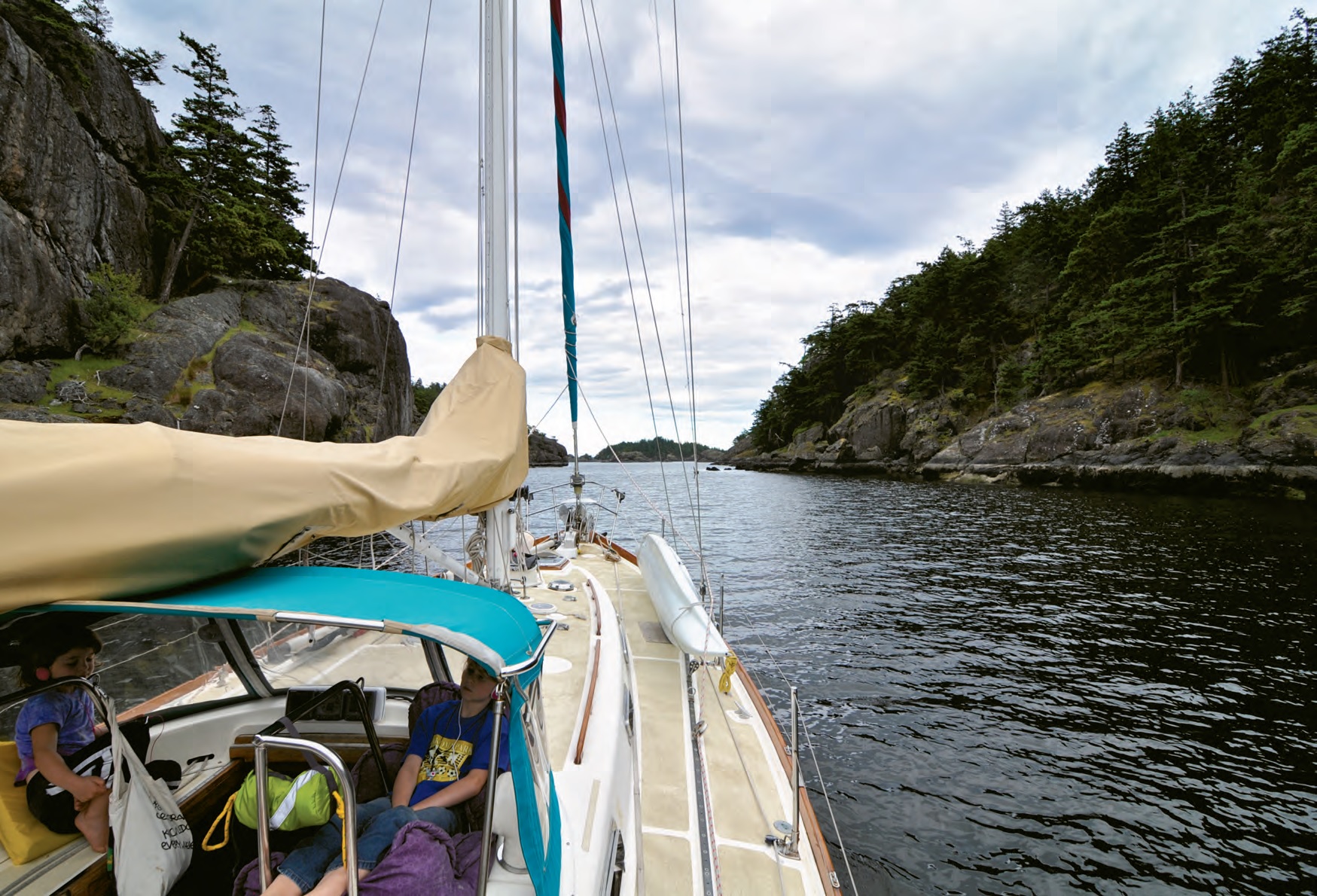As electric propulsion technology leaps forward, that’s a question worth constantly revisiting.
Issue 143: March/April 2022
When we repowered our Liberty 458, Nine of Cups, a decade ago, we took a close look at our options. Should we stick with diesel, or was switching to electric propulsion a reasonable alternative? What we found was that repowering with an electric motor was certainly possible, but the technology for a sailboat of our size was new and untested, the cost would have been triple that of a new diesel replacement, and the necessary modifications would have been extensive. It was no surprise that we opted to stay with diesel.
The technology has, however, changed immensely in those 10 years since we last considered it. If we were repowering now, would we make the same decision, or has the technology evolved enough to make e-propulsion a serious option?
The Basics
In its simplest form, repowering a boat for e-propulsion involves removing the old diesel engine and fuel tanks and replacing them with an electric motor running from a large battery bank. How far the boat can travel on a charge depends on a number of factors, primarily motor size, boat displacement, and battery bank capacity (assuming flat seas and no wind).
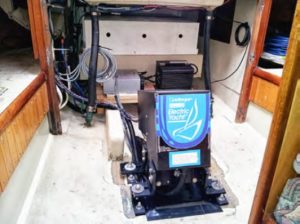
A clean install of an Electric Yacht QuietTorque 180ibl on the 1975 Cal 2-34 Footloose. Photo by Kirk Grier.
Electric motors are rated in kilowatts (kW) rather than horsepower, and in my research, I came across a couple of guidelines that are helpful in determining the size of the motor and the battery banks needed for a given boat. One guideline, from Bell Marine in the Netherlands, is that a motor big enough to power the boat into a strong headwind and/or adverse seas should have a kW rating of at least 2.5 times the displacement of the boat in tons. Another guideline, suggested by Hybrid Marine Ltd., a UK company that specializes in converting boats to e-propulsion, is that it requires about 0.8 kW for every ton of displacement to power a boat at cruising speed in calm conditions.
Using these guidelines for our 20-ton, 45-foot cutter, we’ll need a 50-kW electric motor to handle the worst-case conditions, and it will require about 16 kilowatt-hours (kWh) of battery capacity for every hour of motoring. If we are day sailors and our usual routine is to motor out of the marina, spend the day sailing, then motor back into the marina for sundowners at the dock, we’ll probably need about an hour’s worth of range, or 16 kWh of battery capacity. A 200-amp-hour (Ah), 12-volt battery has a capacity of 2.4 kWh, so we’ll need a minimum of seven batteries. Since many of the electric motors require 48 VDC, we’ll need to put four batteries in series, increasing our batteries to eight.
Unfortunately, this example assumes we are using ideal batteries. Almost every battery chemistry currently available, including lithium ion batteries, exhibits a significantly shorter lifetime if the batteries are frequently subjected to high charge and discharge rates or are fully discharged routinely (See “Taking Charge,” March/April 2020). Typically, to get 8 to 10 years of useful life from a battery bank, only 50 to 60 percent of the available capacity should be used, meaning that the battery bank in our Liberty will need to be increased to 12, or even 16, 200-Ah, 12-volt batteries. That’s a lot of batteries to provide a paltry hour’s worth of motoring, especially when you consider that it takes only about 1.5 gallons of diesel to accomplish the same thing.
If, instead of daysailing, we want to spend a couple weeks gunkholing around the Chesapeake Bay, a summer in the Bahamas, or a few years sailing around the
world, we may need even more batteries, and we’ll certainly need a method of recharging them.
Extending the Range
“Range anxiety” is a term that has been used since the mid-’90s and refers to electric vehicle owners’ worry that they won’t have enough range to make it to their destination, thus becoming stranded along the road somewhere. Many believe range anxiety is the primary obstacle to more universal acceptance of electric
vehicles.
If that’s true of electric cars, range anxiety is also a major fear for those contemplating repowering their boats with an electric motor. It’s one thing to run out of power along a highway, quite another to have the engine quit while motoring up a tight channel with an adverse wind and current, or getting caught in an untenable anchorage without enough battery reserve to raise anchor and motor to safety. Fortunately, there are several ways to recharge those huge battery banks and extend the range.
As boat speed increases, the drag on the hull also increases. The relationship between speed and energy efficiency is somewhat linear at lower speeds but becomes less linear as the boat approaches hull speed, making the boat significantly less energy efficient at higher speeds. Boats have a sweet spot, usually around two-thirds of hull speed. Below the sweet spot, there’s not that much savings to be had in energy efficiency by reducing speed. Every fraction of a knot above the sweet spot, however, decreases energy efficiency disproportionately. Finding the sweet spot and motoring at or below that speed can significantly increase the range that can be provided by the battery bank.
Adding solar panels and a wind generator are two ways to help recharge the battery bank, thereby extending range, but the amount of power that can be generated from these is limited. Let’s look at the output of a state-of-the-art, 320-watt solar panel. On a good, sunny, summer day, we can probably expect to have direct sunlight and full output for about five hours, indirect output at about 50 percent another four hours, and maybe 25 percent output an additional four hours.
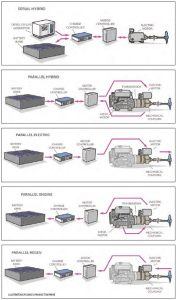
This means that one of these panels could generate a total of five times 320 watts, plus four times 160 watts, plus four times 80 watts, reaching a total of 2.5 kW per day.
The 320-watt solar panels are rather large— 5.5 feet by 3.5 feet. On our 45-foot Liberty, we could probably find room for five panels, three on the stern arch and two on the coach roof, which means that on a good day we could generate five times 2.5 kW, or 12.5 kW of recharge—about enough to motor for 45 minutes. That’s an optimistic number; some days are going to be cloudy, and it doesn’t take into account our other electrical needs like powering the refrigerator, nav instruments, laptops, phones, autopilot, windlass, etc.
Adding a wind generator or two will help. The latest wind generators have a maximum output of 400 to 600 watts, which is typically achieved when the wind speed is 28 to 30 knots. The power generated drops off quickly at speeds below the optimal, however. For example, most wind generators will produce only about 50 percent of their maximum output at 20 knots of wind, and around 10 percent of rated output in 12 knots of wind. If we mounted two wind generators on the transom of Nine of Cups and had a reasonably good day with an average of 20 knots of apparent wind, we could expect to produce 500 watts times 24 hours, or 12 kW of recharge per day—equivalent to another 45 minutes of motoring.
Another method is prop regeneration. When a sailboat is sailing, its freewheeling prop can be configured to rotate the motor, turning it into a generator, which in turn charges the batteries. Hybrid Marine, a UK company that specializes in converting boats to e-propulsion, states that their system will regenerate about 350 watts when sailing at 7 knots. This translates to about 8.4 kW per day—more than the output of three of those 320-watt solar panels.
Combining solar panels, wind generators, and a regenerative prop, we might be able to generate as much as 30 to 35 kW per day, enough to motor our Liberty for an hour and a half or so. If we also keep the speed at the most energy-efficient point, perhaps we can increase the motoring time to two to three hours; more than adequate for most days. On the other hand, a couple of cloudy, calm days may find us producing little more power than our normal electrical needs, with very little going towards recharging the motor battery bank.
Having a small, 2- to 6-kW gas or diesel generator aboard can be a good backup plan and help reduce range anxiety. If the boat’s displacement is much bigger
than the kilowatt output of the generator, however, the generator probably won’t be big enough to drive the motor directly. But, it can help recharge the battery bank. The negative, of course, is that with our Liberty, we’d have to run the generator for somewhere between three and 12 hours to replenish an hour’s worth of motoring time.
Even with all these options, it’s probably prudent to keep the boat towing insurance paid up—or consider another option, an automotive type of combination
of a fossil-fuel engine and electric propulsion, aka, a hybrid.
Hybrids
Hybrid technology combines a fossil-fuel engine and an electric motor to propel a boat through the water. There’s no range anxiety, because the engine is always available as a backup to get you home if you become becalmed, the weather changes suddenly, or the batteries run low. And just like today’s hybrid cars, there are two approaches, a serial hybrid drive and a parallel hybrid drive.
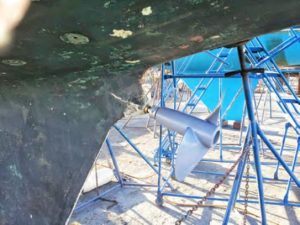
The shortened prop shaft and 16-inch Perfect Pitch Extendo prop installed on Footloose raised eyebrows from old salts in the boatyard, but it’s efficient and easy to change on an electric motor. Photo by Kirk Grier.
A serial hybrid drive consists of a large generator that provides the electrical power to drive the propulsion motor and charge the batteries. The controller monitors the battery charge and motor load and automatically starts the generator as needed. Ideally, the generator output should be at least large enough to drive the motor at maximum load. Any excess energy produced by the generator charges the batteries. The generator can be either the boat’s original engine coupled to a generator or a standalone AC or DC genset.
In its simplest form, a parallel hybrid drive has both an electric motor and the boat’s combustion engine attached to the propeller shaft. When the batteries are charged and the boat is motoring, the engine is shut down and put in neutral, and the electric motor drives the shaft. When the batteries get low, the engine is started, driving the propeller as well as the electric motor and recharging the batteries. When sailing, the engine is turned off, put in neutral, and the freewheeling prop drives the motor, recharging the batteries.
Is it For You?
E-propulsion technology has seen major advances over the past few years. There have been significant improvements in battery technology especially, much of it
spurred by the automotive industry. Even with these advances, however, batteries remain the weak link of e-propulsion for boats. Pound for pound, diesel has 10 times the energy density of the best available battery technology. Some of this is offset by the higher efficiency exhibited by electric motors, but even taking this into account, fossil fuels have a major advantage in energy density.
So, if we were repowering Nine of Cups today, would we go with one of the electric options or make the same decision we did a decade ago and replace that old
diesel with a newer version? From a purely economic point of view, diesel is the clear winner. It’s doubtful that the installation costs of electric would ever be recouped by the savings in maintenance, oil changes, and fuel.
However, there is much to be said for electric propulsion other than the cost, including quiet, smooth, emission-free operation, low maintenance, and increased
maneuverability, not to mention the environmental benefits in terms of emissions and fossil fuel consumption. For me, it would be a tough call.
Good Old Boat Electronics Editor David Lynn and his wife, Marcie Connelly-Lynn, lived aboard Nine of Cups, their Liberty 458 cutter, for 18 years, putting nearly 90,000 nautical miles under her keel and visiting more than 36 countries on five continents. They are currently exploring North America in a tricked-out Ford Transit van named Blue. They blog regularly and maintain an extensive website at justalittlefurther.com.
Thank you to Sailrite Enterprises, Inc., for providing free access to back issues of Good Old Boat through intellectual property rights. Sailrite.com

